By Lucia Malon, HPF correspondent
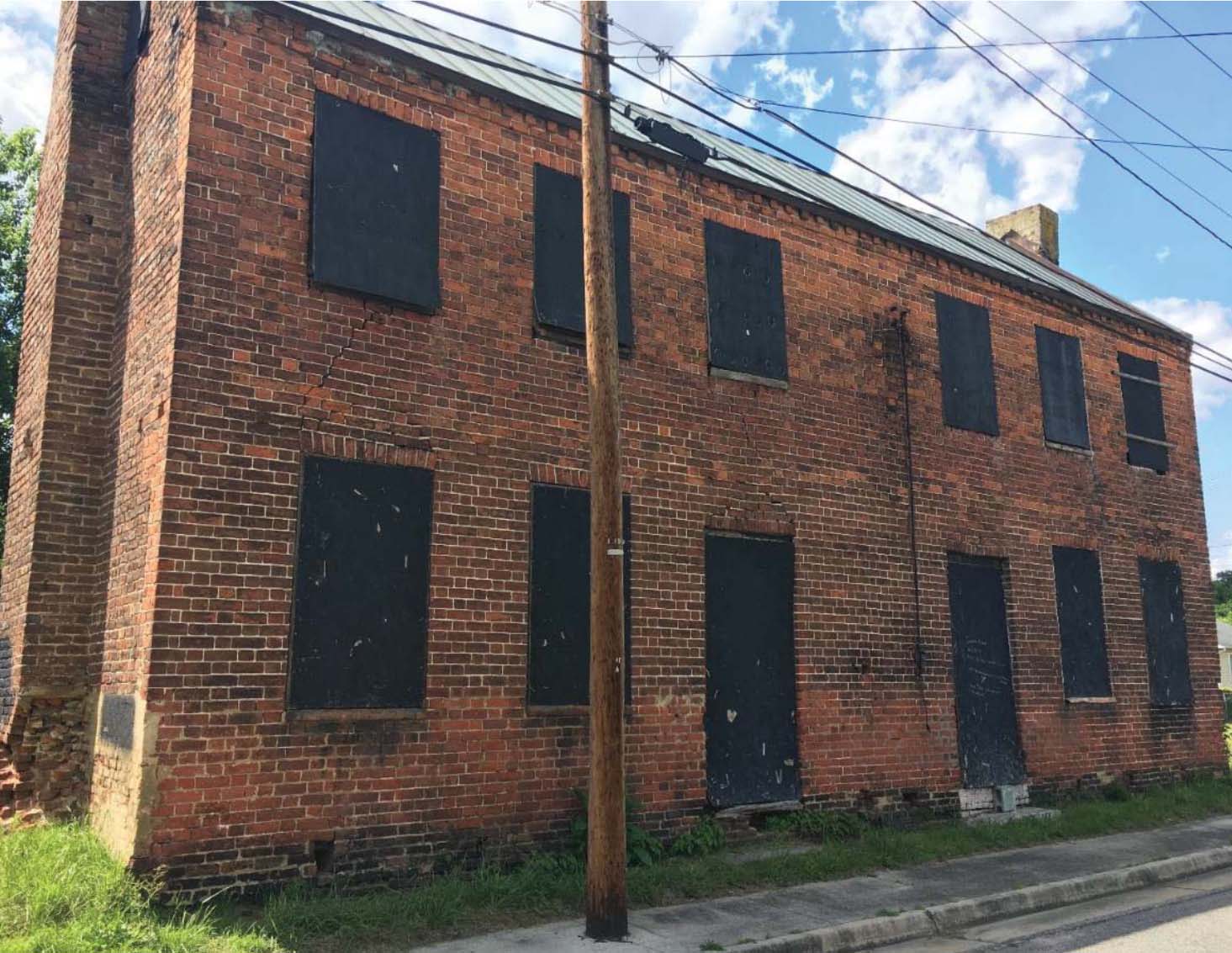
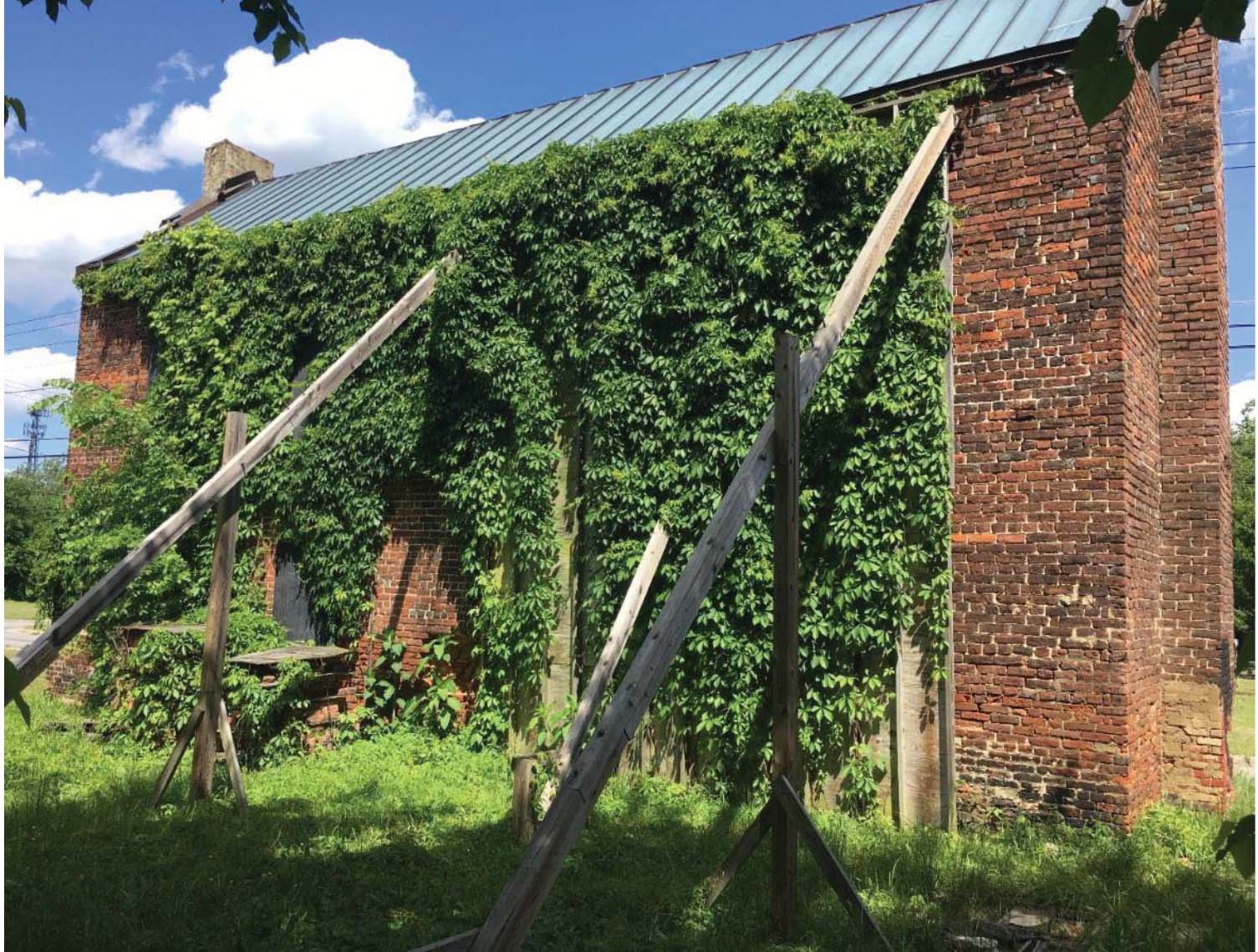
Sitting in the middle of Petersburg’s Pocahontas Island is a 2 story brick building that has been boarded up for years. Not knowing anything about it, you might think that it had simply been abandoned and forgotten by its owner.
Nothing could be further from the truth.
Called the Jarratt House, efforts to save the crumbling structure have been going on for years. It is owned by the City of Petersburg which has recently stepped up plans to create a cultural center that will join the other historical and interpretative sites in the city that are open to the public.
Unlike the other City sites, this one will help tell a side of Petersburg’s history that has not yet been adequately told – the story of the Black people without whose efforts the City would not have become the important place that it was (and to many of us still is!)
As a matter of fact, when it comes to Black History in America, Petersburg is among those places with the greatest significance. Not all of the history is pleasant – Black Africans were brought here as early as the 17th century to serve the well-to-do landowners. Around 1732, a man named John Bolling brought many of them to the area to work in his tobacco warehouses, located on a peninsula east of Petersburg called Wittontown.
During the next couple of decades – well before it was common – many of those individuals gained their freedom and formed one of the nation’s first free African-American communities. At about the same time, Wittentown was renamed Pocahontas. That evolved over the years into Pocahontas Island. Although it is not really an island, those living there probably felt like it was as it separated them from the rest of the much different city of Petersburg.
The name of the island, after a Native American woman, ironically bears an interesting significance to the Jarratt House story.
Although long known as The Jarratt House, it is believed to have been built by a man named John Wilder, a white businessman, around 1820. In the years that followed, it changed hands a number of times and was divided into 2 separate residences. Around 1853, an enterprising Native American woman named Lavinia Sampson (of the Powhatan tribe) purchased half of the house. A decade later, she was able to purchase the other half. When she died in 1877, the house was sold to John Jarratt, a black fisherman and boatman. The Jarratt family retained ownership until the 1990’s when they donated it to the City.
It was the wish of the Jarratts to have the house become a place where people could learn about Pocahontas Island’s past, especially its role in the Underground Railroad. The Jarratt House was one of two known stops where fleeing blacks could find refuge before continuing their journey north. Saving the house is now more important than ever – sadly, the other house was demolished by its owner early in 2020.
Unfortunately, work on the Jarratt House has been painfully slow. In 1995, a new roof was put on. But work stopped there until around 2014 when a rear wall that was falling down was stabilized. Shortly afterward, it was named an endangered historic site by Preservation Virginia, and the Virginia Department of Historic Resources awarded Petersburg a Community Development Block Grant to help with improvements. The first step in that process was getting an historic structures report done. That was finally completed in 2017.
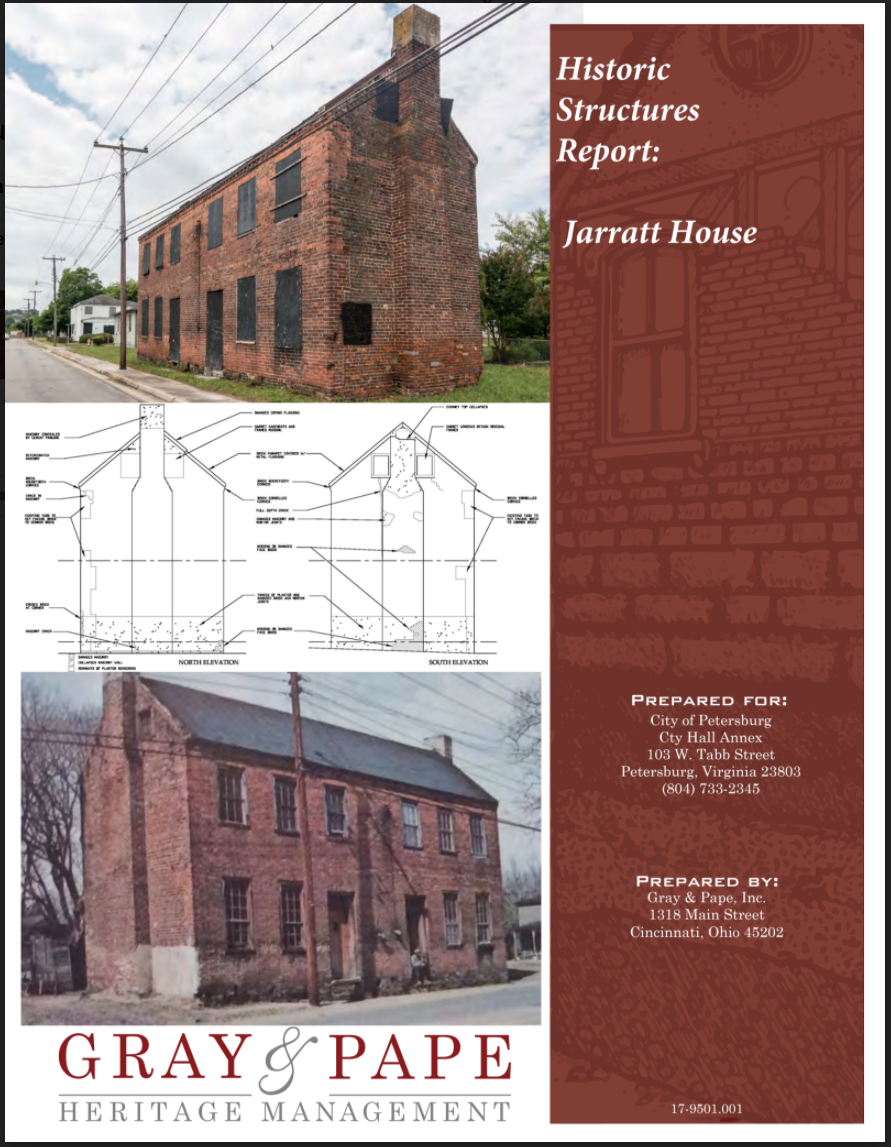 In recent years, efforts have been concentrated on finding the right contractor to take on the challenge of restoring the house while keeping it historically correct. Its current condition makes the job tricky – you need to have someone who understands the materials and processes used in the past. And then there’s the matter of cost. It will not be cheap and the City has just so much money available for its rehabilitation. But Preservation Planner Kate Sangregorio persevered. After going through 3 rounds of bids with no positive results, her department recently found the right people for the job, for the first phases at least.
In recent years, efforts have been concentrated on finding the right contractor to take on the challenge of restoring the house while keeping it historically correct. Its current condition makes the job tricky – you need to have someone who understands the materials and processes used in the past. And then there’s the matter of cost. It will not be cheap and the City has just so much money available for its rehabilitation. But Preservation Planner Kate Sangregorio persevered. After going through 3 rounds of bids with no positive results, her department recently found the right people for the job, for the first phases at least.
Late last month, a team from Virginia Masonry Restoration (VMR), working under general contractor Daniel & Company from Richmond, began the painstaking work of rebuilding the rear brick wall that had started to collapse in 2011. In doing so, they had to determine why the wall had collapsed and how it affected the rest of the structure, especially the second floor joists. So they are rebuilding it in stages while trying to match the different size and color of bricks originally used. Not an easy task, according to masonry expert Warren Davies, VMR owner.
“We’ve had to cut old Carolina brick moulds in order to get the coursing to blend out,” says Davies, continuing, “We are trying to tie the various elements back together.” But HPF President Louis Malon, who has worked with Davies many times in the past on high-visibility structures, has confidence that he will do a good job. “He always does excellent work, satisfying even the most critical preservationists,” Malon reports.
Once Virginia Masonry Restoration gets to a certain point, a carpentry crew will be brought in to work on the joists and framing. Each team knows the importance of using the techniques of the past in order to keep the historical integrity of the building as intact as possible.
Many in Petersburg are excited about the start of the work. Sangregorio, who also serves on the HPF Board, commented, “This project means a lot to me because for so long, the narrative history of Petersburg has focused on the Civil War; even though we have a rich African-American history spanning even farther back than that. Pocahontas is one of the oldest and largest African American communities, established even before the Civil War, and the Jarratt House stands as a solid anchor to that past. Its renovation will give hope to the future of this community. The Native American connection to the house is also significant since that is another story which is not often told.”
John Jarratt, a descendant who lives in Petersburg noted, “The family is wholeheartedly thankful to have our family’s homeplace as a portion of Petersburg’s black history. It suggests that in an era of good and evil, strong and weak, growth and destruction, Petersburg managed to persevere. The Jarratt House along with other Petersburg historical landmarks speaks to its place in early American history.”
HPF Secretary Beverly Coleman remarked, “I am happy to see that the city is restoring the Jarratt House as it is a significant reminder of the importance of Pocahontas Island as one of the oldest black communities in America.”
If you have never been to the Jarratt House and/or would like to see firsthand the work being done, mark your calendar for November 12. HPF representatives will be there to talk about its history, the current restoration efforts, and the future plans for the house. It promises to be the start of something very important for Petersburg.
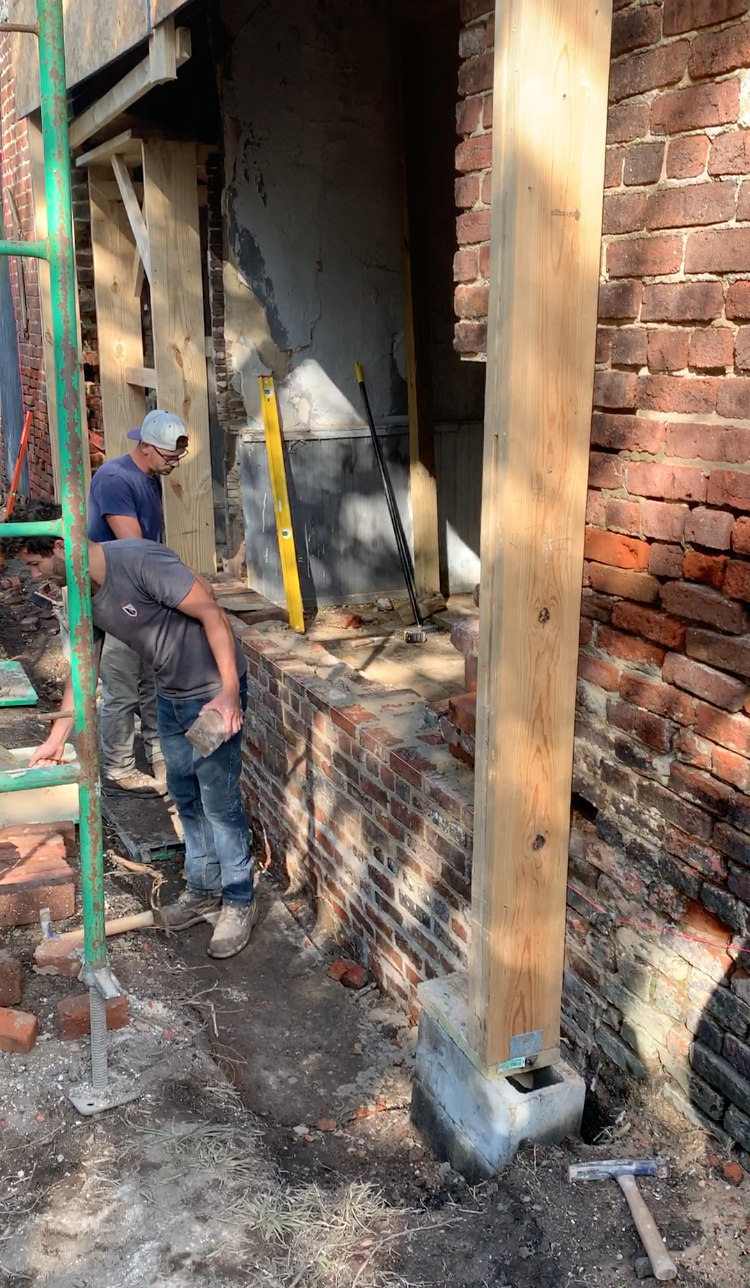
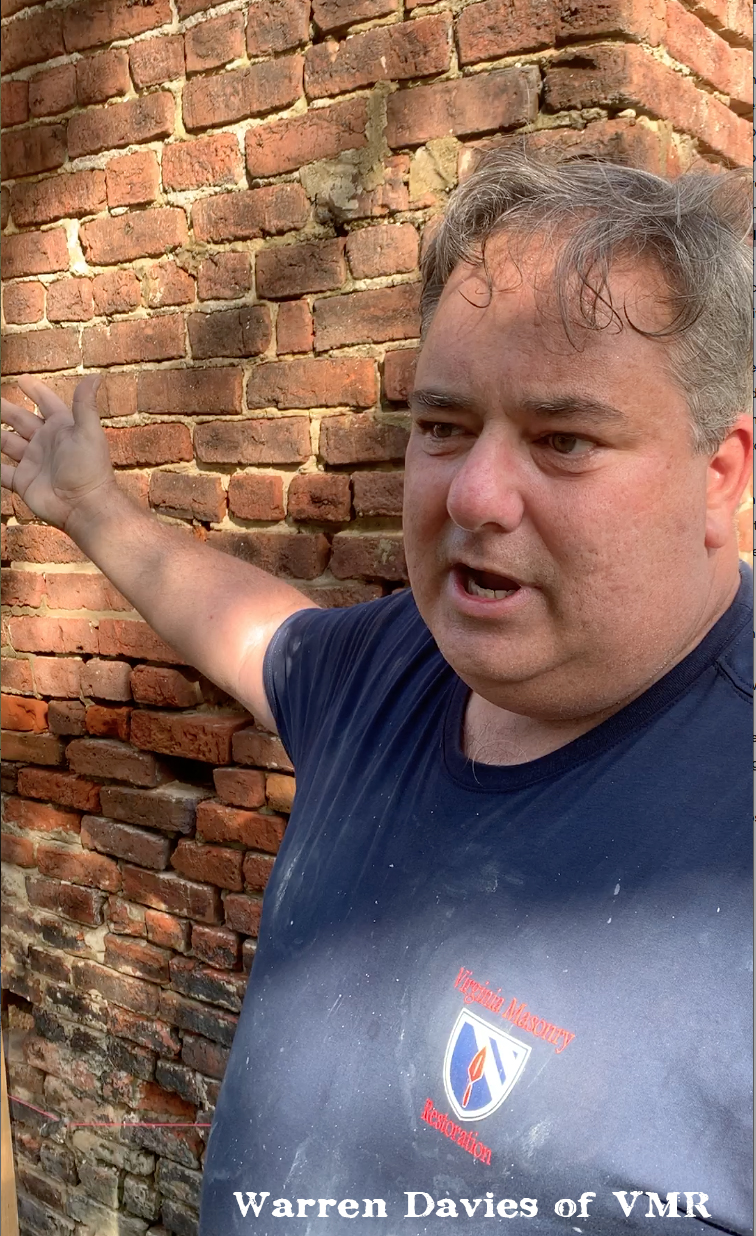
Return to Restoration News